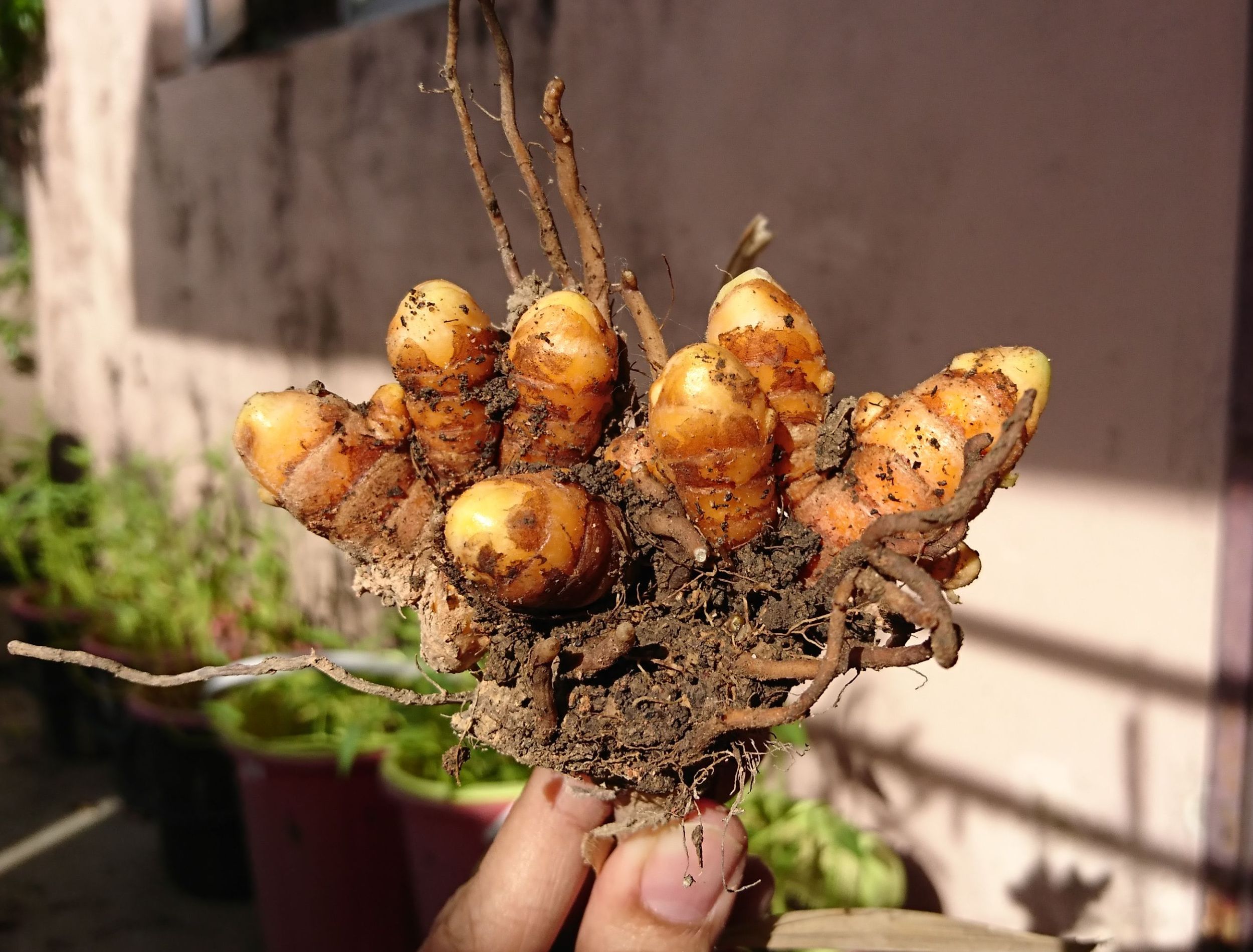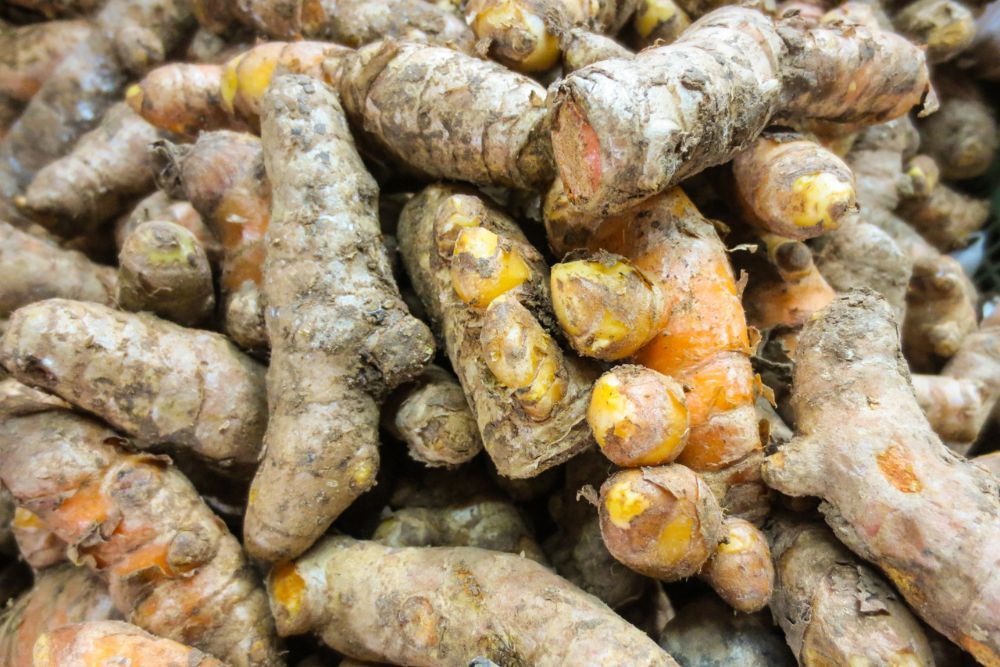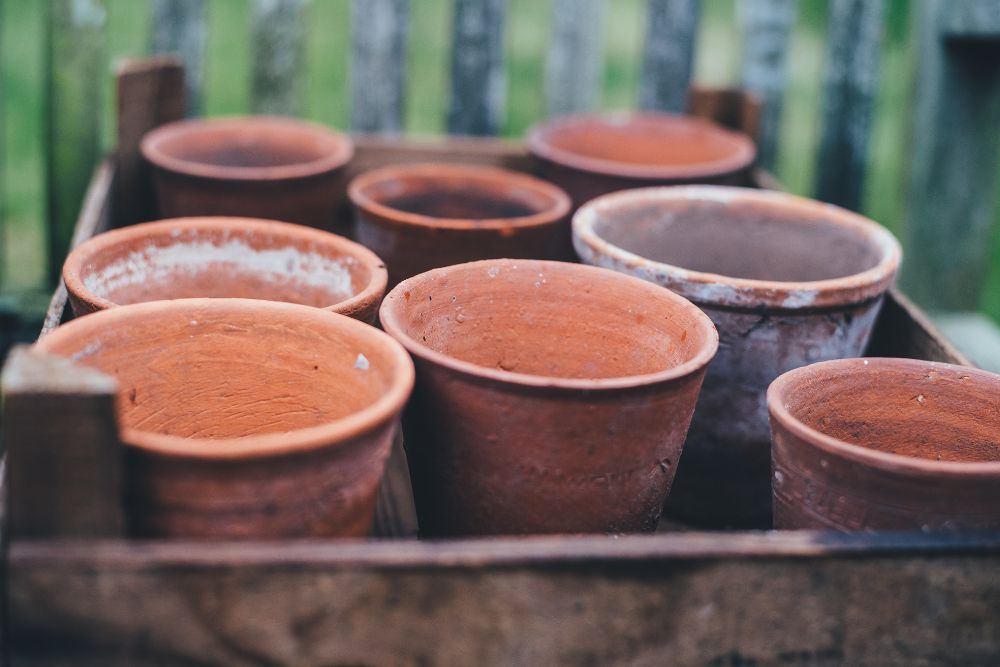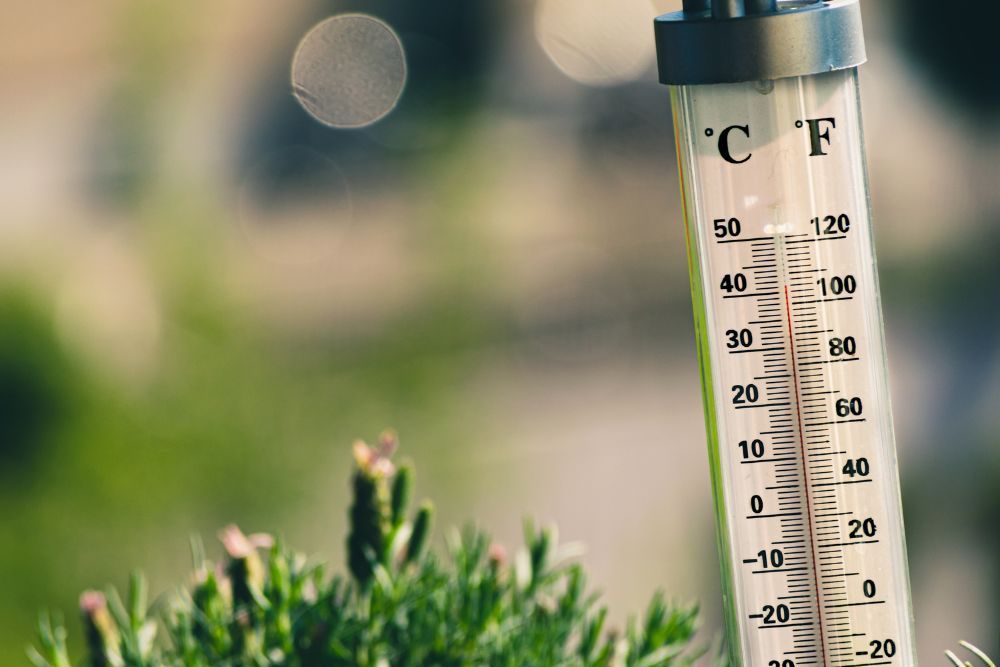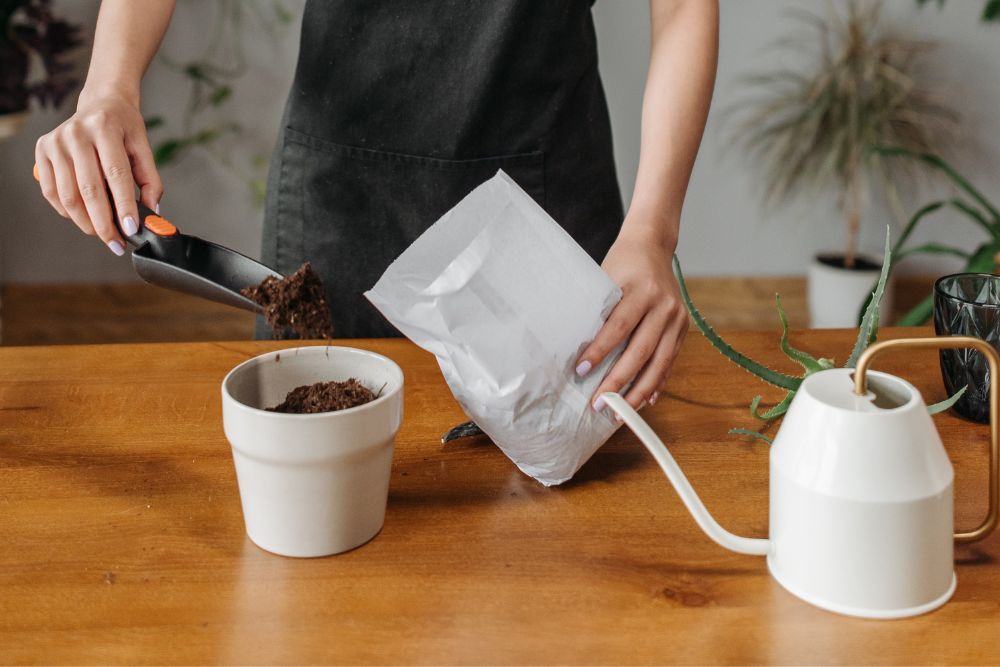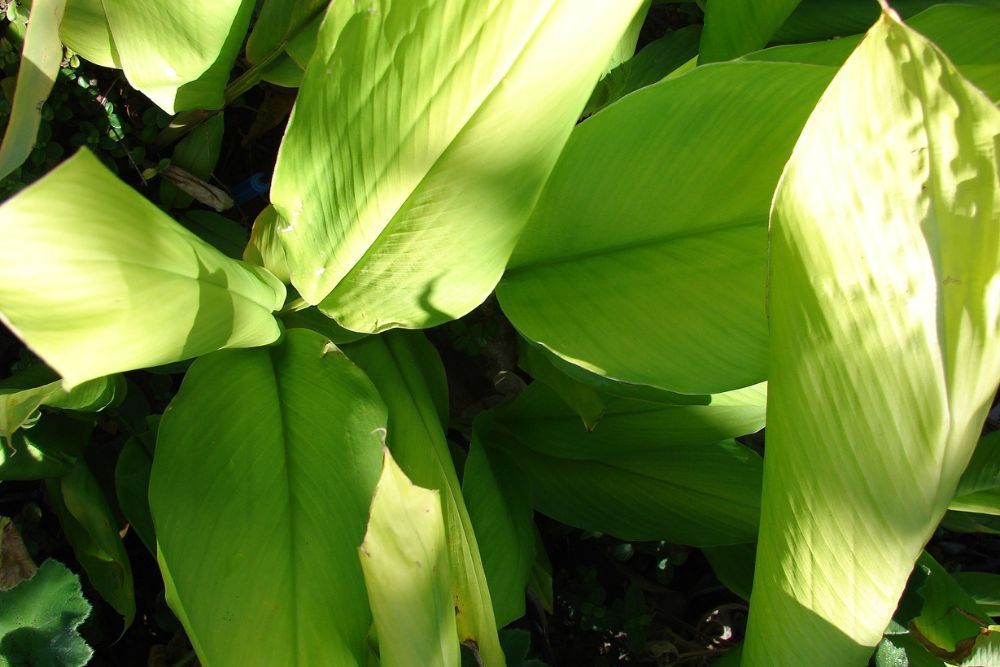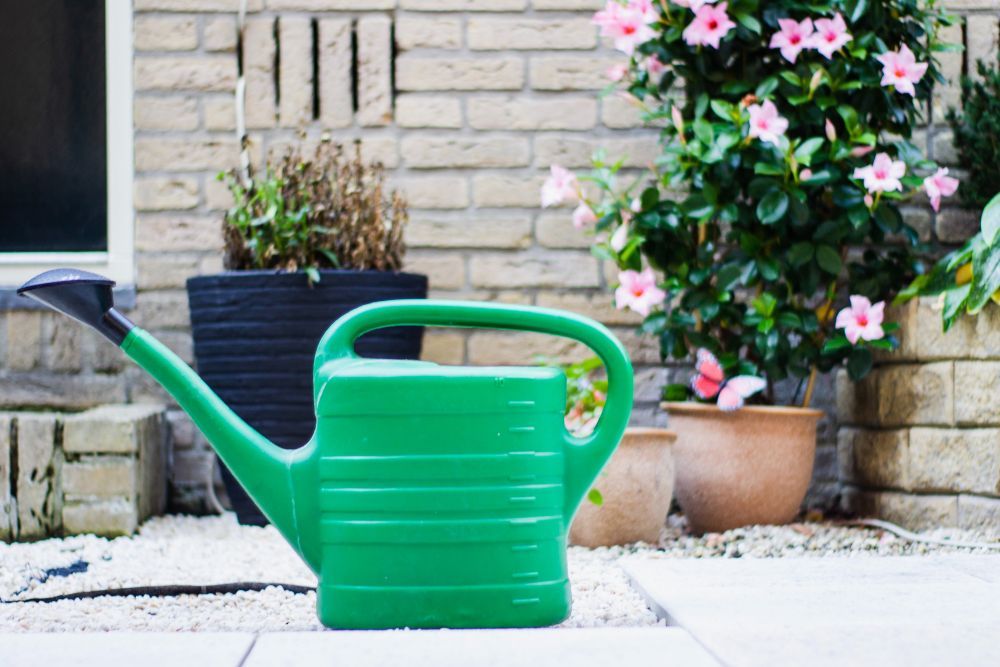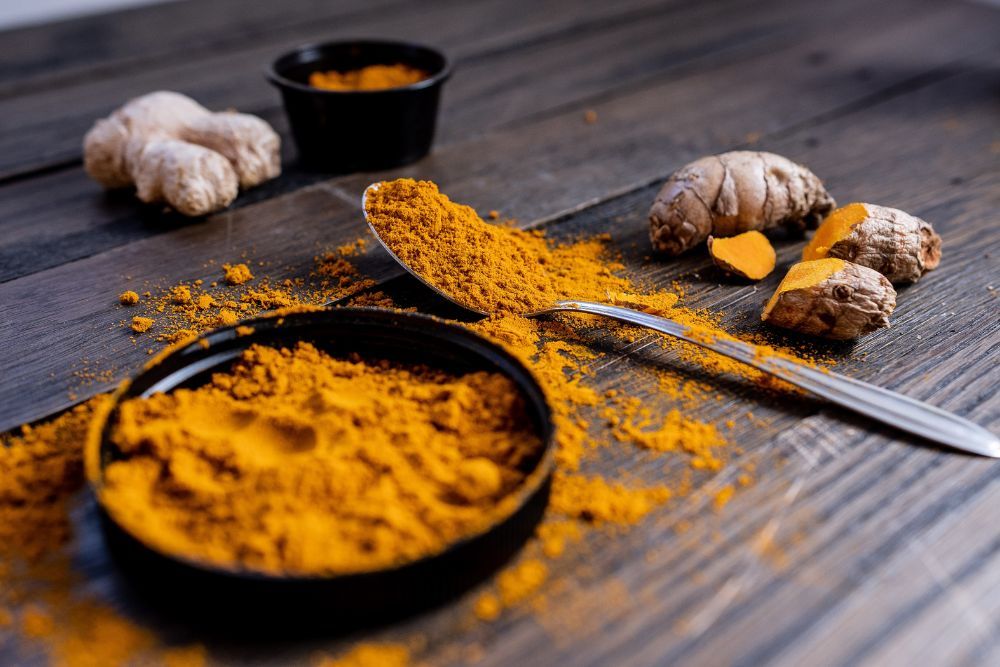Turmeric, or Curcuma longa, has been around for nearly 2,000 years and has many uses. It is a popular savory spice in curry seasonings and culinary recipes. Plus, it also has health benefits and creative uses. For instance, you can use turmeric as a yellow dye for crafts or as a natural food coloring.
Cultivating turmeric in pots or containers is a great project if you love to cook or get creative! Learn seven tips for growing turmeric in pots to enjoy a spicy, golden harvest that will help you reach your culinary and DIY goals!
Find Healthy Rhizomes
Image credits: Bungasirait via Flickr
To start cultivating turmeric, you need to find a healthy turmeric rhizome. You can buy turmeric rhizomes specifically for gardening or use ones you find in your grocery store. Look for ones that are firm and not shriveling or soft. Then, choose a piece several inches long to split into a few pieces.
Each of these smaller sections should be about 2 to 3 inches long. Look for rhizomes with several eyes or buds, which are small bumps from which the plant will grow. Each 2 to 3-inch section you plant should have two to three buds.
Choose the Right Container
Image credits: Annie Spratt via Unsplash
Choosing the right size pot is essential for any container garden. Turmeric needs room to grow, so pick a pot at least 3 gallons with drainage holes. Turmeric rhizomes can grow large enough to crack a smaller container. While 3 gallons is an excellent start size, turmeric plants can spread up to 2 feet across. A mature turmeric rhizome will need a pot about 15 inches in size.
To keep plants manageable, harvest the entire rhizome after 10 months and cut a 2 to 3-inch section off of the rhizome to store over winter. Then, replant this section in its own 3-gallon container next spring.
Pro Tip: To preserve rhizome sections for spring, store them in peat or vermiculite during winter and keep them dry to very lightly moist in a cool area.
Maintain Warm Temperatures
Image credits: Jaroslaw Kwoczala via Unsplash
Turmeric thrives naturally in India, where it usually gets consistently warm temperatures. So, when you plant turmeric in indoor or outdoor containers, maintain its optimal temperature range.
If you are growing it inside, set your thermostat between 65 and 85 degrees Fahrenheit, and don't let it drop below 50 degrees Fahrenheit. Then, wait until temperatures are around 65 degrees Fahrenheit before moving pots outdoors.
Pro Tip: Growing turmeric in the ground is a great alternative to container gardening in zones 8 to 11. While you can plant it in the ground in cooler zones, you will have to dig the rhizomes up in autumn before temperatures drop and store them indoors over winter.
Pick Mildly Acidic Soil
Image credits: Rocketmann Team via Pexels
Turmeric loves mildly acidic soil with a pH between 6 and 8. When planting a turmeric rhizome in a container, lay it flat on the soil so that the buds are on the top, then add a 2-inch layer of nutrient-rich potting soil over the rhizome. Water the rhizome so that the soil stays moist to the touch.
Fun Fact: Turmeric produces beautiful 4 to 6-inch flowers in golden yellows and bright whites that will also add a pop of color to your container garden!
Be Patient
Image credits: Forest and Kim Starr via Openverse
When cultivating turmeric, you need to pack a bit of patience. You'll have to wait three to eight weeks to see your first sprouts. When you see those delightful green leaves popping up, ensure your turmeric gets six hours of sunlight daily. Place indoor containers by a sunny window, or if it is warm enough outdoors, harden off the plant for summer by placing it outside for a few more hours each day until it can spend all its time in the garden.
Water Frequently
Image credits: Louis Hansel via Unsplash
The best way to determine when to water your turmeric plant is by feeling the soil. Place your fingertip a few inches into the soil, and if it feels slightly dry it is time to water your plant again. Keep in mind that while turmeric rhizomes love moisture the soil should not feel soggy. It is important to check the soil for moisture daily, while turmeric naturally thrives in monsoon season it goes dormant when the soil dries out which could prompt a smaller early harvest.
Yellowing leaves will tell you you're either over or underwatering your plant, check the soil to make sure.
Enjoy Your Turmeric Harvest
Image credits: Karl Solano via Pexels
Turmeric takes approximately 10 months until it is ready to harvest. At this point, the leaves on your turmeric plant will fade to yellow, begin to dry, and die off. When you see this, it's time to harvest your turmeric! Dig up the plant from its container, then brush off the loose potting soil and cut off the foliage and stem. Now you can cut off a few 2 to 3-inch sections to save for container gardening next year. The rest you can dry out and enjoy!
Fun Fact: You can use your turmeric harvest as a spice for cooking. Boil, dry, and, finally, grind up the dry rhizome into a powder you can sprinkle into your recipes.
Terrific Turmeric
Turmeric is a wonderful spice that you can cultivate in containers. By following a few essential tips like choosing healthy rhizomes to plant, picking a 3-gallon container, and keeping your turmeric warm, you will likely have a terrific turmeric harvest from your container garden!
What are your tips for growing turmeric in containers? Share your expertise below and help fellow gardeners cultivate thriving turmeric plants!

